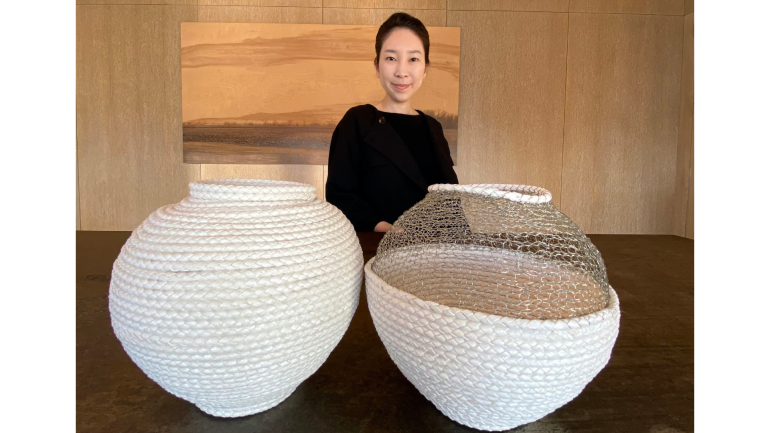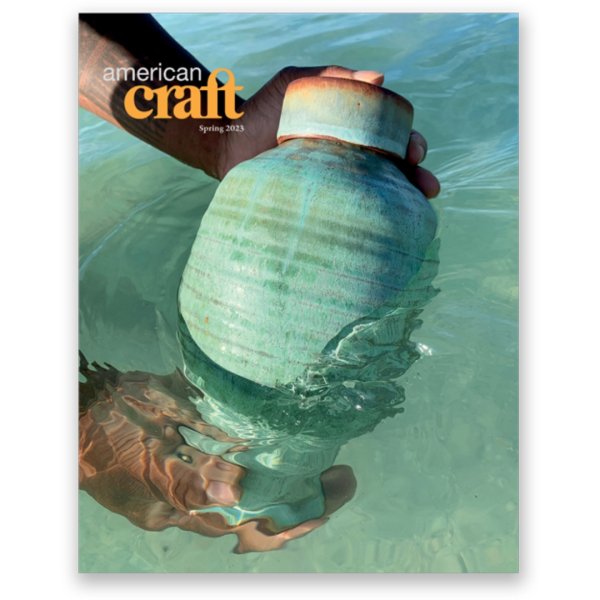The Queue: Hyunsoo Alice Kim
Get to know the people featured in the pages of our magazine as they share what's inspiring them right now.
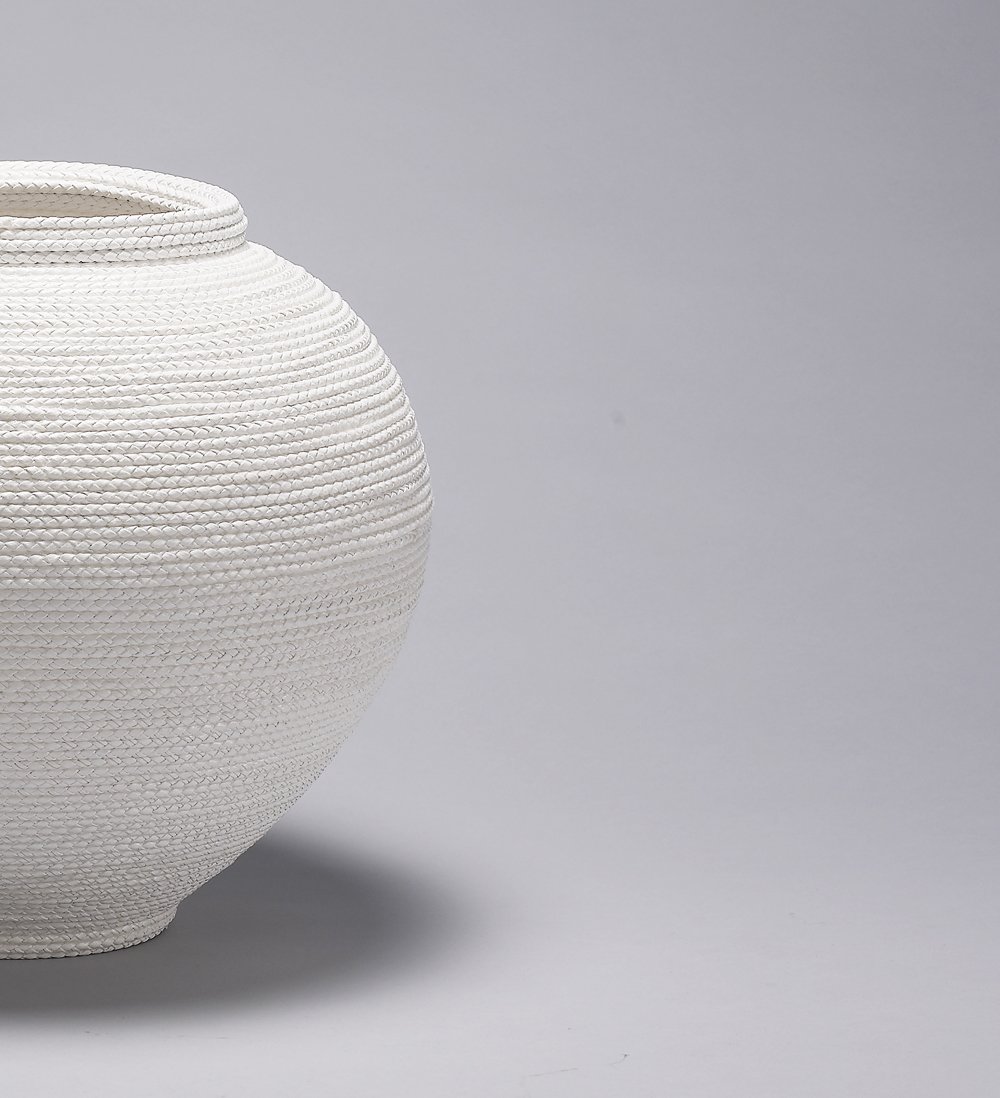
Woven Moon Jar 2020 II, 2020, braided and coiled white leather, 8 x 13 x 13 in. | Photo by Studio Munch.
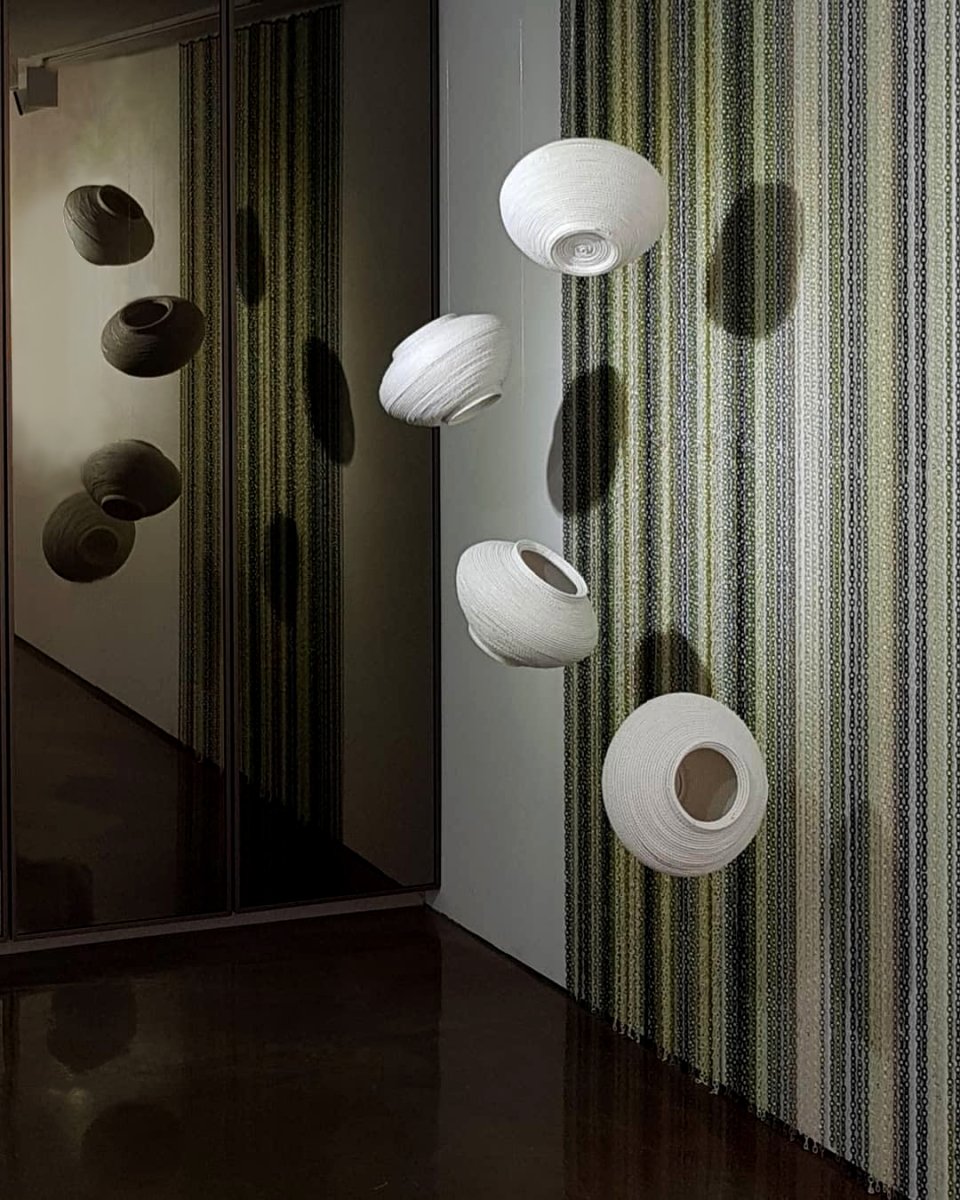
Woven Moon Jar Collection 2018 I, 2018, braided, coiled, and knitted leather, 8 x 10 x 12 in. each (4 pieces total). Installed at Crafts on the Hill Gallery in Seoul, South Korea. | Photo courtesy of Hyunsoo Alice Kim.
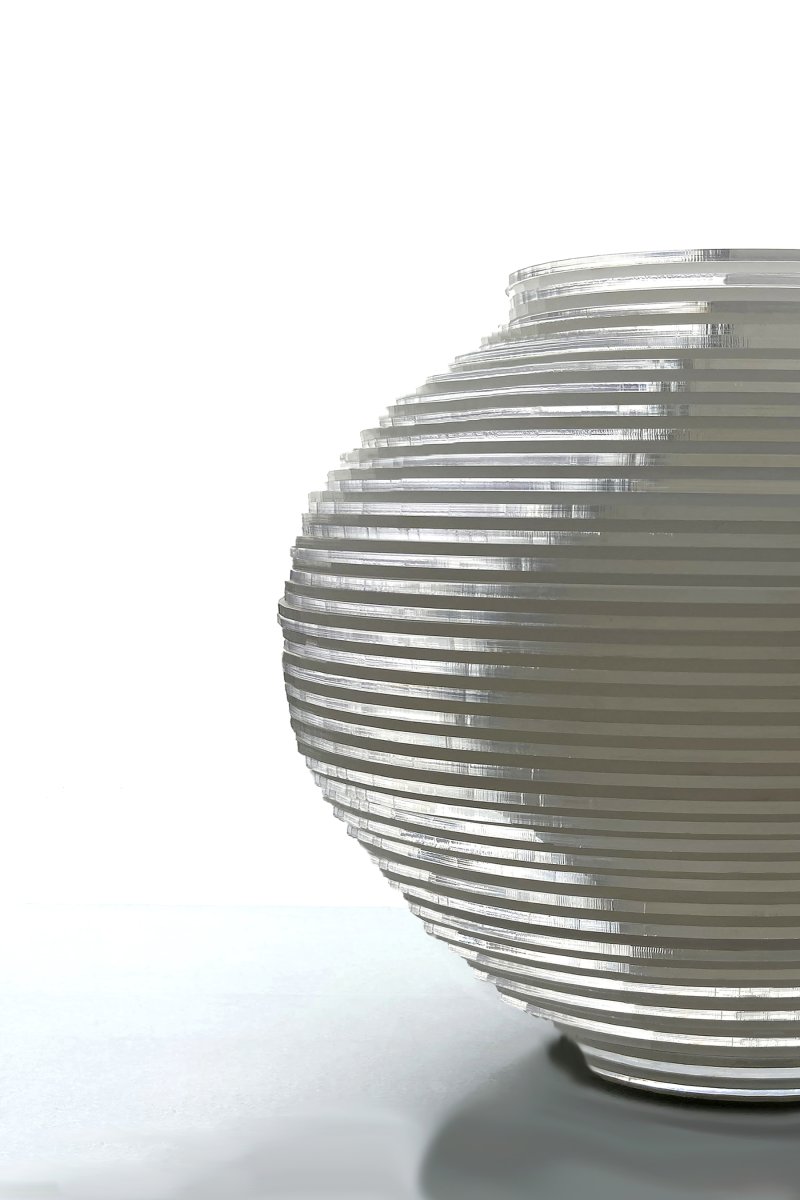
Layered Moonjar 2023 IV, 2023, laser-cut acrylic, 8 x 13 x 13 in. | Photo by Hyunsoo Alice Kim.
How did your love of craft begin?
My love for craft began even before I learned the word craft. My first weaving project was in kindergarten, where we had a coaster-size tapestry frame. A teacher showed me how to weave with a large flat bamboo needle, up and down the warp.
How do you describe your work or practice in 50 words or less?
I’m a multidisciplinary artist, researcher, and educator who works in the realm of textiles, digital fabrication, research, and education. The three strands underlying my artistic practice are personal experiences as a “modern nomad,” historical research on Korean aesthetics (sustainability, practicality, and efficiency), and expertise in textiles and digital fabrication.
You refer to yourself as a “modern nomad” and attribute your use of textiles to create the Woven Moonjar to the demands of this way of living. What are some of your favorite kinds of portable (or lightweight) craft?
Korea was known as “a country of hats” during the Joseon Dynasty (1392–1910). One of the most well-known hat forms is called gat. While it may not be obvious from the appearance due to the black lacquer, the cylindrical part is woven with horsehair to provide flexibility, and the brim with bamboo for resistance.
What are your favorite technological tools?
I enjoy working with traditional tools as well as any type of computerized looms or digital fabrication machines, such as a laser cutter, 3D printer, and digital embroidery machine, which permits extensive freedom. I believe integrating technology into the making process is sustainable and efficient. I prefer to use a laser cutter when it comes to preplanning (using CAD) and cutting to minimize waste.
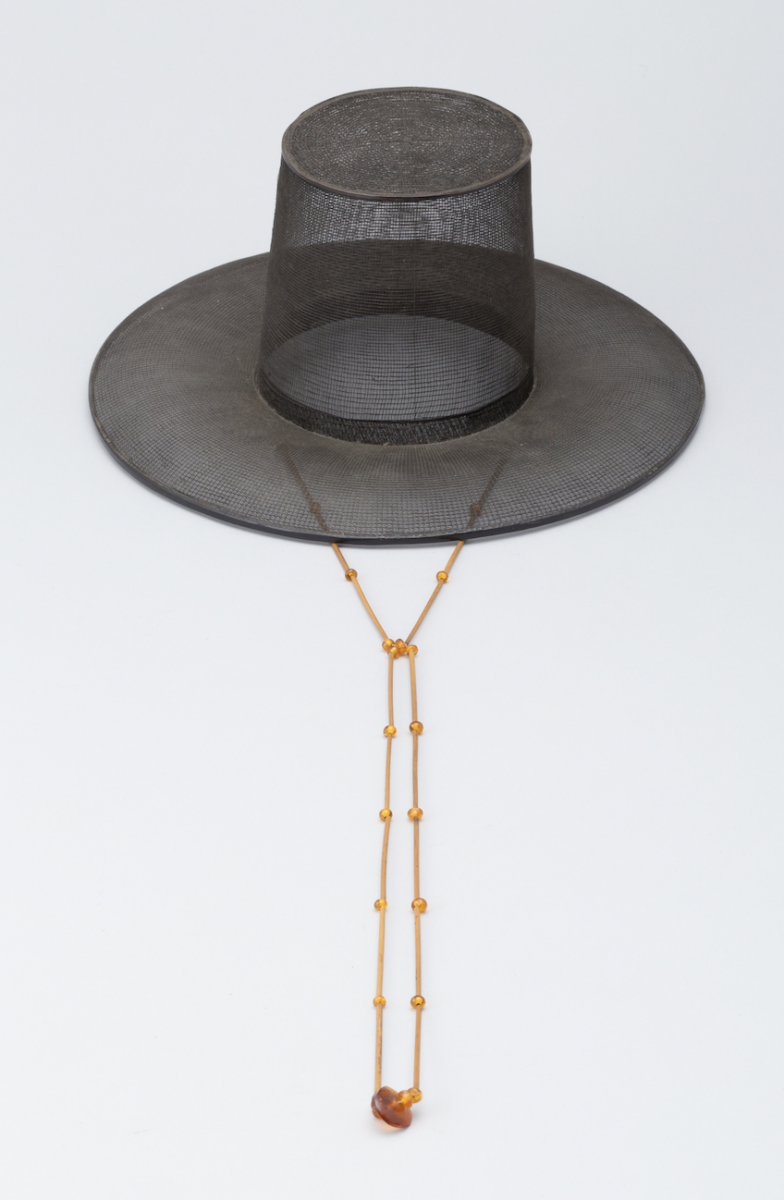
A gat is a traditional Korean hat worn by men during the Joseon period. Traditionally made by master artisans of horsehair and bamboo, they are light, flexible, and strong. | Photo by National Folk Museum of Korea, courtesy of Wikimedia Commons.
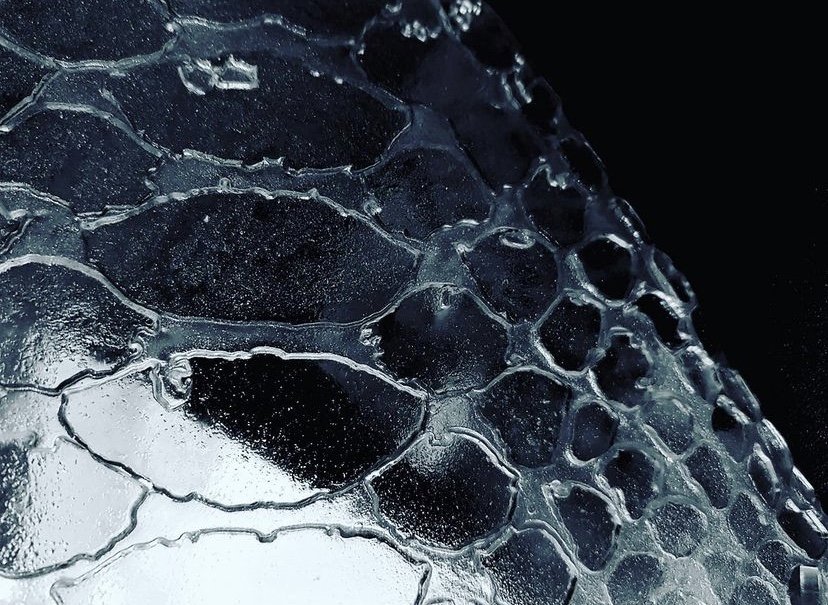
Sustainable Leather Collection 2022, 2022, biofabrication, digital fabrication, 13 x 13 in. | Photo by Hyunsoo Alice Kim.
You’re also an educator and researcher working to find sustainable leather alternatives. How do you incorporate this work into your artistic practice?
I always have a number of different research projects in progress, and I’m starting to see some of them merging together. My research on Korean aesthetics and its artistic transformation into contemporary art forms is merging with another project of mine, Sustainable Leather, a research project integrating digital fabrication and biofabrication.
Which artists, craft exhibitions, or projects do you think the world should know about, and why?
A course I proposed at Teachers College, Columbia University, is the first Ivy League graduate course to offer textiles as a method for teaching digital fabrication. The first exhibition of the students’ work, Textile x Technology 2022, at Macy Art Gallery, attracted one of the gallery’s largest crowds.
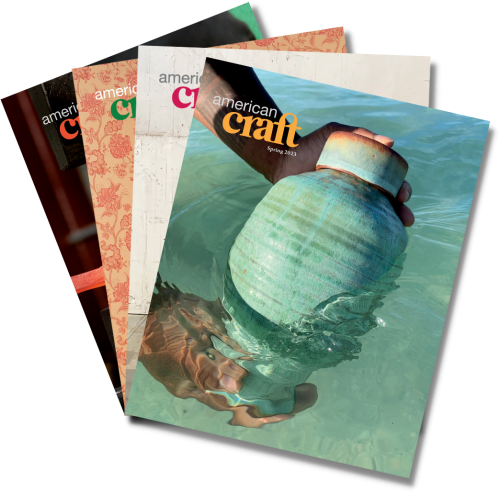
Learn more about the artists you love by becoming a member today!
Become a member to get a subscription to American Craft magazine and experience the work of artists who are defining the craft movement today.


